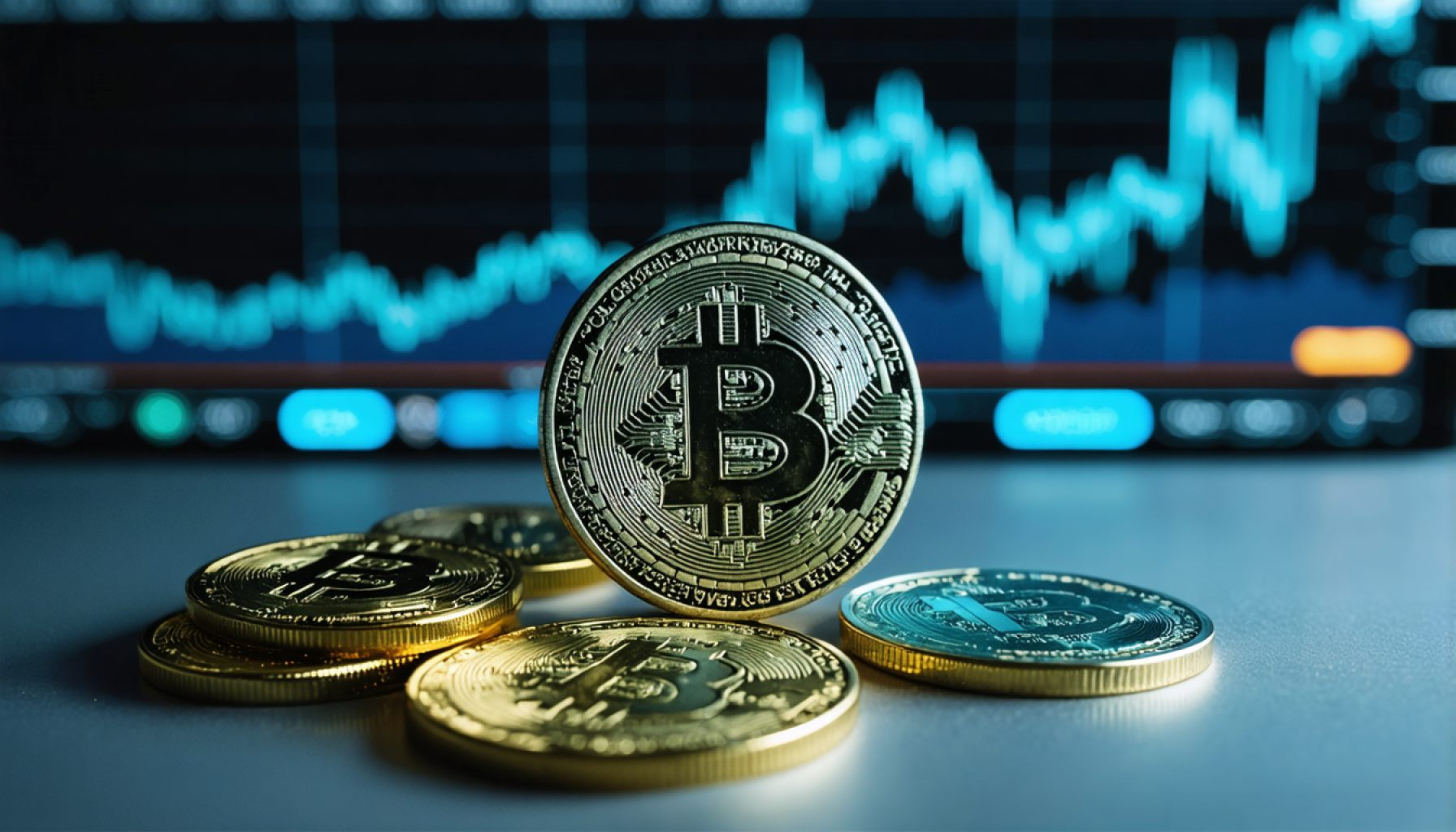- XRP’s price plummets to $1.6775, marking a significant drop not seen since last November, stirring investor concerns.
- The decline is attributed to global economic tensions, particularly new tariffs imposed by the U.S., heightening fears of a trade war.
- Cryptocurrencies, including Bitcoin and Ethereum, are experiencing downturns amid broader market instability and a “risk-off” sentiment.
- XRP’s downward trend mirrors major crypto movements, influenced by economic forecasts and traditional market tumbles.
- Technical indicators for XRP suggest a bearish outlook, with potential further declines if key support levels are breached.
- Despite current challenges, long-term projections for XRP remain hopeful, with potential significant growth anticipated by 2030.
- Investors should stay informed on trade policy, Ripple’s legal status, and technical signals to navigate market volatility effectively.
- XRP’s current situation highlights the ongoing volatility in cryptocurrency but also the prospect for future recovery and adaptation.
XRP, a prominent digital currency associated with Ripple Labs, faces turbulent waters as its price nosedives to $1.6775—numbers not seen since November last year. This stark drop is sending shockwaves through investor circles, all grappling to understand the forces behind this downturn, and whether further declines loom on the horizon.
What’s at the heart of this plunge? Cast your eyes toward global economic woes marked by a fresh wave of tariffs from Washington. In a sweeping move dubbed “Liberation Day,” President Donald Trump laid out hefty duties on imports from economic giants like China, Canada, and Mexico. A sweeping 20% tariff on Chinese goods, coupled with sharp rates on steel, aluminum, and automobiles, has triggered fears of a global trade war, deeply unsettling financial markets worldwide. The aftershocks are palpable—global stocks tumbling, the yen riding high, and cryptocurrencies now caught in the crossfire.
Across the cryptocurrency landscape, ripple effects manifest starkly. Titans like Bitcoin and Ethereum find themselves on the backfoot, losing significant ground amid a broader “risk-off” sentiment. Bitcoin, which once buoyed itself above $80,000, has slipped by a notable 7%, settling at $77,077, while Ethereum trades at a reduced $1,538.
XRP, known for echoing broader crypto trends, has not escaped unscathed. The tumult in traditional markets, combined with its strong correlation to Bitcoin, has led the cryptocurrency down a similar path. Financial theory suggests that crypto assets behave like high-risk markets—flourishing in prosperous, low-interest climates but withdrawing sharply in the face of economic pessimism.
Technically speaking, XRP’s current trajectory paints a bearish picture. Having hit a formidable support line, the cryptocurrency now hovers close to critical thresholds. Chart analysis suggests that breaching the $1.77 mark could see XRP spiraling further to $1.50, or even nearing the psychological barrier of $1. Bearish activity remains prevalent, particularly with Monday’s session underscoring investor apprehension.
Despite these market tumbles, long-term prospects for XRP maintain a sliver of optimism. Analysts glancing toward 2030 envisage steady growth, with XRP regaining its footing through Ripple’s institutional endeavors and evolving regulatory landscapes. Projections, from Changelly’s $26.09 average to more bullish figures from DigitalCoinPrice floating near $80, suggest brighter days ahead.
For investors feeling the heat of XRP’s skid, a strategic review is paramount. Monitoring trade policies, Ripple’s legal developments, and keeping a pulse on technical indicators will be crucial in navigating this economic storm. Whether you’re a dauntless adventurer in digital currencies or testing waters for the first time, the current market turbulence demands both caution and clarity.
In the swirling ether of uncertainty, XRP’s latest lows remind us not only of volatility’s enduring presence but also of the potential for resilience and rejuvenation as markets adjust to new economic realities. Will XRP’s sails catch the wind once more, or will the choppy seas of global commerce chart a divergent course? Only time and forthcoming events hold the answers.
XRP’s Plunge Amid Global Trade Tensions: What Investors Need to Know
Understanding the XRP Price Decline
The recent crash of XRP, which has seen its price drop to $1.6775, is not an isolated event but a reflection of greater economic disturbances. Here’s an in-depth look at the underlying factors and what investors can anticipate:
1. Global Trade Tensions: The imposition of tariffs by the U.S. on countries like China, Canada, and Mexico has unleashed fears of a trade war. These tariffs are perceived as the initiators of global financial market instability, affecting not just traditional markets but also cryptocurrencies like XRP.
2. High-Risk Asset Correlation: Cryptocurrencies are often compared to high-risk market assets, thriving in low-interest environments. The current economic pessimism has pulled the brakes on their progress. XRP’s price movement mirrors that of Bitcoin and Ethereum, suggesting a close interdependency with major market players.
3. Technical Analysis of XRP: Current technical indicators point towards a bearish trend for XRP. A breach below the $1.77 level could catalyze further declines, with potential targets being $1.50 or even as low as $1.00. Traders are keeping a close eye on these critical thresholds.
Market Forecasts and Industry Trends
Long-term Predictions for XRP
Despite the current volatility, some analysts hold a bullish long-term view for XRP. Predictions by sources such as Changelly and DigitalCoinPrice have set high expectations for XRP’s price by 2030, ranging from $26.09 to possibly even $80. These optimistic projections hinge on Ripple’s legal and institutional advancements and potential regulatory improvements.
Real-World Use Cases
XRP plays a significant role in cross-border payments, promising quick and cost-effective transactions compared to traditional banking methods. Ripple Labs continues to establish partnerships with financial institutions, which could bolster XRP’s utility and value over time.
Investing in XRP: Strategies and Tips
1. Stay Informed on Trade Policies: Understanding global trade impacts can provide foresight into potential market shifts that affect cryptocurrencies.
2. Legal Developments: Pay attention to Ripple’s legal journey and any regulatory changes, as these can significantly influence XRP’s market performance.
3. Technical Indicators: Utilize chart pattern analysis to anticipate potential price movements and adjust your investment strategy accordingly.
Security and Sustainability
Ripple’s XRP Ledger is known for its sustainability, using a consensus protocol rather than the energy-intensive proof-of-work mechanism. This environmentally friendly approach could appeal to socially conscious investors.
Pros and Cons Overview
– Pros:
– High-speed transactions
– Low transaction fees
– Increasing institutional adoption
– Cons:
– Regulatory uncertainties
– High correlation with Bitcoin, leading to volatility
– Legal challenges, especially with the U.S. SEC
Conclusion: Strategic Takeaways
With XRP caught in the throes of global economic tensions, investors need to maintain a balanced perspective. Recognize the duality of volatility and opportunity in the cryptocurrency market by staying informed, adaptable, and ready to capitalize on emerging trends.
For further reading on cryptocurrencies and potential strategies, visit Forbes or CoinDesk for the latest insights and analyses.
By following these guidelines, investors can navigate the tumultuous waters of cryptocurrency with greater confidence and insight.







